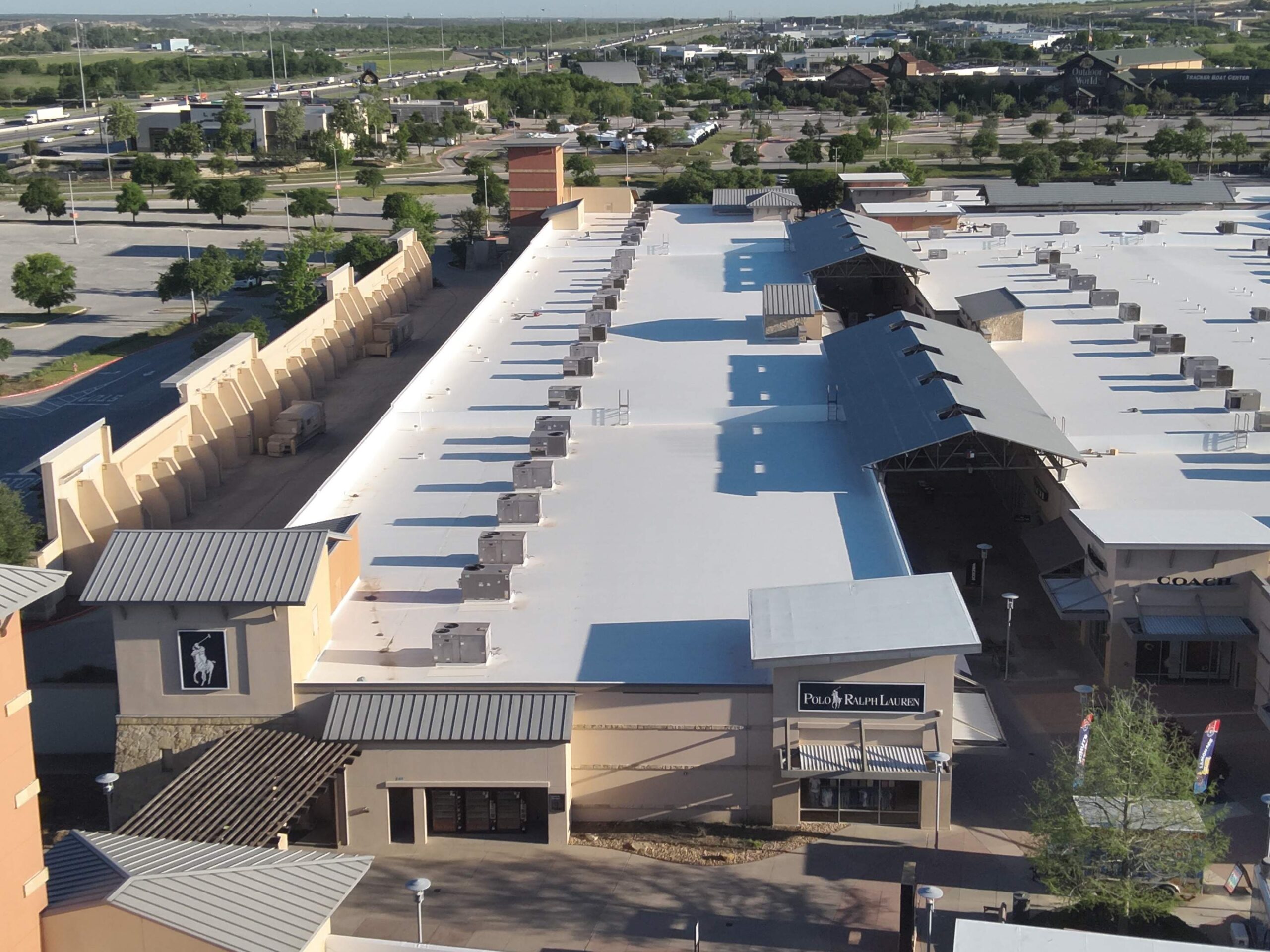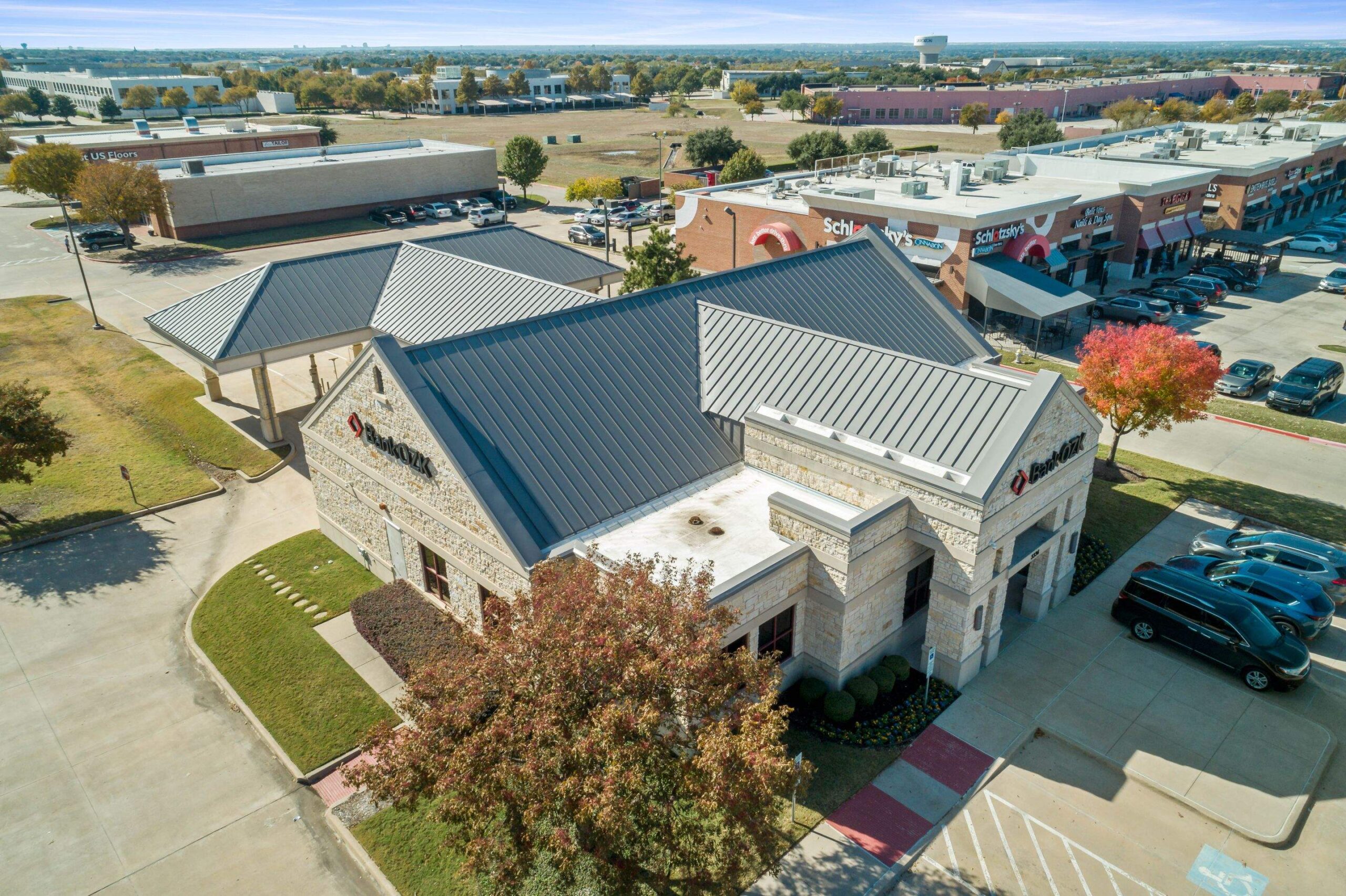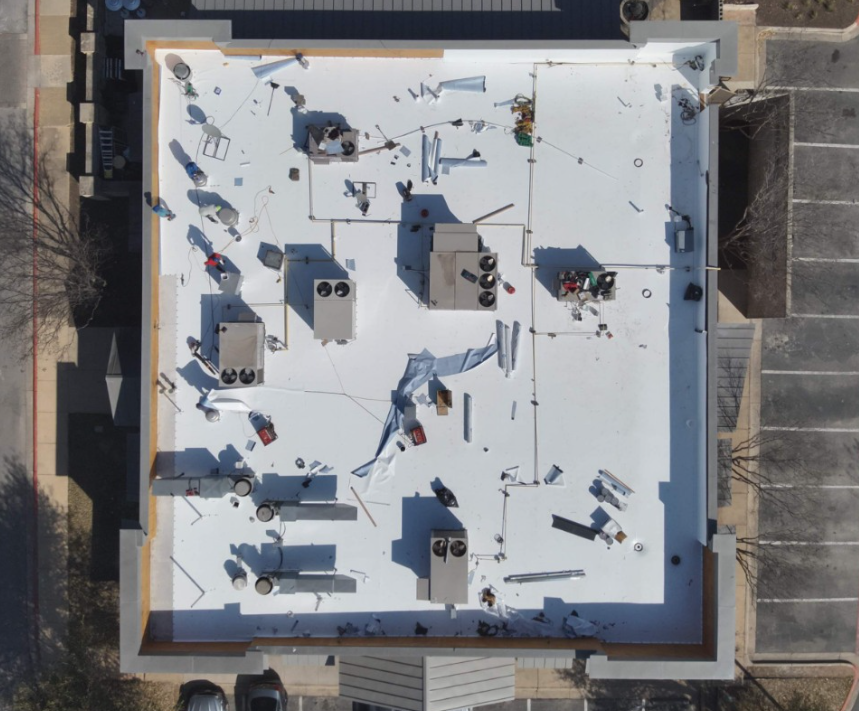Sloped or Flat? The Best Roof for Your New Business
Choosing a roof for your commercial building isn’t the most exciting decision of your life but it is a really important one. Kind of like picking between coffee or tea: both have their perks, both have their drawbacks, and the wrong choice for you is a real bummer.
So, let’s figure it out: Flat vs. Pitched Roofs—what’s best for your building, your budget, and your peace of mind? We’ll discuss all the options and take some of the work out of the decision for you!
The Key Differences Between Sloped and Flat:
Flat Roofs
Not totally flat (liars!), but they have a very low slope—typically less than 10°.
Think: warehouse roofs, big-box stores, or sleek, modern offices.Pitched Roofs
These have a noticeable slope—anything greater than 10°.
Think: traditional homes, charming small businesses, or buildings looking for some visual interest

Stunning, gorgeous, like freshly fallen snow.
Flat Roofs, Plead Your Case
Cost-Effective: being flat provides less surface area to cover = less material = less work = happy pockets.
Easier Access: no harnessing required! OSHA loves a safe workspace.
Extra Usable Space: great space for an HVAC system, available to use as patio, or even a rooftop garden. (Check out our rooftop decking here!)
Modern Aesthetic: sleek architecture that is both current and ties into styles of the past.
The Downsides (this is a joke about roof pitch)
Drainage: Yes, flat roofs have a slope. But if the drainage is not properly planned or if there are foundation shifts, you could be open to puddles.
Shorter Lifespan: The materials most common on flat roofs tend to wear out faster than a traditional asphalt shingle.
Snow & Debris Buildup: In snowy states (looking at you, Colorado and Missouri), flat roofs need some extra love in winter. If you love your push broom, now is your time to shine.

Stunning, gorgeous, an urban mountain.
And Now, Sloped Roof, Your Argument
Excellent Drainage: Precipitation and debris have no issue sliding right off. (Your gutters matter, though!)
Longer Lifespan: Materials like metal or shingles tend to last longer thanks to reduced water stress. (But flat roofs can be metal, too!)
Energy Efficiency: Sloped roofs often allow for better ventilation and insulation options.
Curb Appeal: More visually interesting and traditional—especially for smaller businesses or mixed-use buildings.
The Downsides
Higher Cost: More materials, more labor, and often more complex engineering.
Maintenance Access: We’re Cirque-du-Soleil-ing it with all the ropes and harnesses.
Not Ideal for Big Buildings: Pitched roofs aren’t as practical on large commercial properties with wide spans. See point one for more info.
Your Conclusive Cheat-Sheet
| If your building is… | Go with… |
|---|---|
| A warehouse, big-box store, or school | Flat roof |
| A small office or retail shop | Pitched roof |
| Located in snowy climates (CO, MO) | Pitched, or flat with reinforced structure & drainage |
| Located in hot & dry climates (TX, OK) | Flat roofs with reflective coatings |
| Planning rooftop solar or HVAC | Flat roof is easier |
| All about that stylish curb appeal | Pitched or combination roof |
Only you can answer these questions about your business and the future of your building. No matter what you decide, Roof Experts is here to help. With a combined century of roofing experience, we have worked with every type of roof!
Whether your small business is in an old home or if you’re starting from the ground up, we have the expertise and the top-notch customer service to make this an easy process.
Don’t forget to follow us on Instagram where we post ongoing projects, household tips and tricks, and general tomfoolery!
View this profile on Instagram


